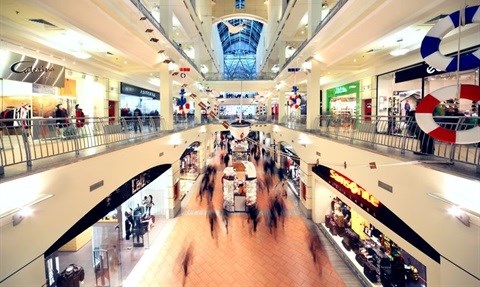A long breath needed to invest into Africa
It also demonstrated that while large, more established markets have remained stable, there is still some volatility in smaller countries on the continent. This volatility is highlighted by the movement of Rwanda, ranked number one by the Index last year to number six this year.
The Index has a new number one in Gabon. Marieke Witjes, a member of A.T. Kearney's global strategy practice, focusing mainly in consumer driven industries, says that while the country may be small, it is stable and growing fast, making it an attractive option for some brands. However, she emphasises, its small size means it might not be of interest to bigger retailers such as some of the larger supermarkets which would be more interested in larger markets such as Nigeria and Angola.
"What needs to be taken out of this is that while there may be changes in the rankings of individual countries, the bigger picture is that growth is continuing and the continent is catching up at a faster pace than last year." This shows a greater desire for goods from the continent's growing middle class. This is a bit of an egg and chicken scenario. "Does the mall come first or the need for shopping or the other way around? Regardless we are seeing retail expanding from big cites to major towns."

Jaco Prinsloo, a principal with A.T. Kearney, who has more than 12 years of consulting and industry experience in consumer goods, says where there is growing political stability, foreign investment follows. "This leads to the development of infrastructure which leads to the development of a retail climate. With more infrastructure taking place on the continent it is followed by shops which is followed by people with a greater need to purchase."
The growth of South African brands and retailers expanding north is seriously expanding. "This is especially into West Africa and to some extent into East Africa. It is a response to the growth in South Africa slowing down."
In some countries the population are relieved to see this more formal type of retailing and it also means that they do not have to travel to Johannesburg to shop anymore, he adds. This is especially so for the countries just south of the country.
"However the perception is that if it works here we can sell it in the rest of Africa is very dangerous. The rest of Africa is culturally different not only to South Africa but within themselves. Countries have their own shopping patterns."
His advice is to do your homework, understand the user and provide goods relevant to that users. "For example put a local language on it. If it is a Portuguese or Spanish speaking country do not put out products with English packaging." He adds that already retailers are better at meeting different market needs than just a few years ago.
But it is not just South African brands heading north; international brands are entering the continent, including South Africa - and this is not because it is the gateway to Africa. "Companies and brands do not need to enter Africa through South Africa; instead their offering will determine how they enter a country. Brands are saying what is my offering and how can I customise it to this country?" he says.

The influx of international brands into South Africa, such as Lindt and Starbucks, does not surprise him. "South Africa is the continent's most developed economy." What it is doing is putting more pressure on local retailers, who are already battling with the weakening rand and rising dollar import as well as a decline in consumer spending as disposable income shrinks, and rising input costs."
While Nigeria and Angola's economies are slowing (because of their oil dependence), and this holds true for most of Africa because of the commodity downturn, there are still growth opportunities in Africa, especially compared to developed traditional markets.
Despite this the continent's middle class is still growing. However this is often too optimistically Witjes says. "If the definition of a middle class person is earning US$4 a day then this is still a relatively small part of the population. Most people in Africa earn or live off less than $2 a day. So we need to not overestimate the rate that this middle class is growing at," Witjes says.
The same goes for the youth she says. "Yes the youth gives the continent opportunities, but with unemployment so high the youth is not the first group that is going to be spending money."
Investing into the continent is a long term game. A company has to create brand loyalty though a long term approach. You need a long breath to invest into Africa says Prinsloo. He suggested delivering a basic offering in a big city works. "If you can deliver on scale in large countries and large cities at a competitive price you can make it work."
When examining where to invest in Africa, Witjes says the emphasis should be on what the country is like and what is already on offer there.
























